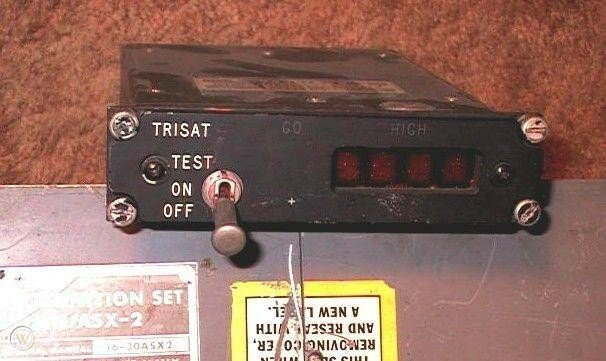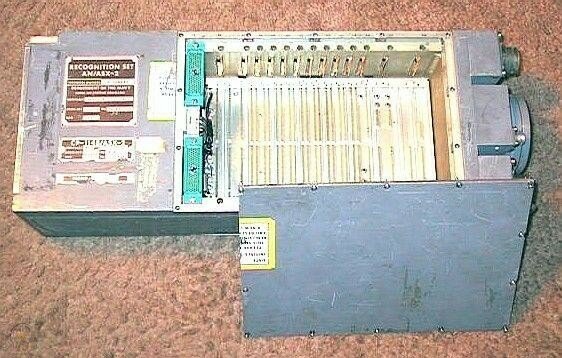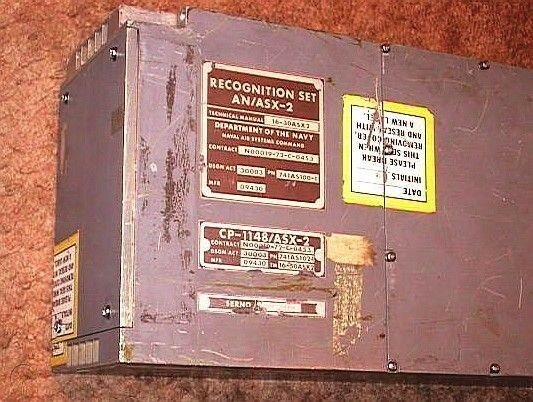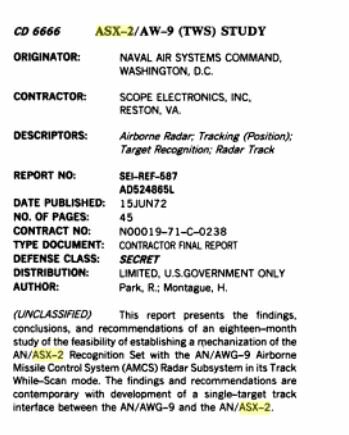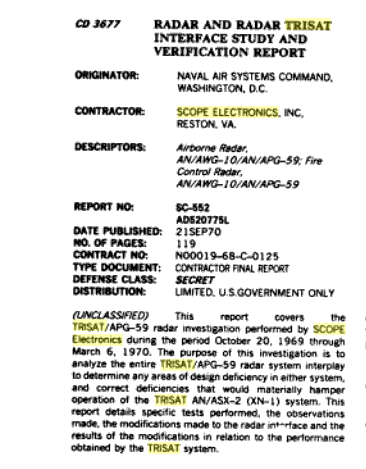You are using an out of date browser. It may not display this or other websites correctly.
You should upgrade or use an alternative browser.
You should upgrade or use an alternative browser.
AN/ASX-2 TRISAT NCTR system
- Thread starter GARGEAN
- Start date
- Joined
- 16 April 2008
- Messages
- 8,395
- Reaction score
- 10,336
TBH this is the first time I hear USAF having such authority over USN actions.
CENTAF (nominally a joint activity but heavily dominated by Air Force staff) set the rules of engagement for CAP aircraft, and the way they wrote the ROE made F-14s very disadvantaged in general. ROE required two forms of electronic target identification for a BVR missile shot, which F-15s and F/A-18s could meet with IFF and non-cooperative target recognition (NCTR). The F-14s lacked NCTR, which made it much harder for them to get approval for BVR engagements. They had the long-range TV system, but that really didn't allow them to take advantage of AGM-54's range. So they became very expensive Sparrow shooters. Coupled with the fact that they were mostly stuck in the overwater CAP stations with few opportunities to even see Iraqi aircraft, they had relatively few intercepts.
I'd have thought the F-14 were equipped NCTR.The F-14s lacked NCTR, which made it much harder for them to get approval for BVR engagements.
Last edited:
- Joined
- 16 April 2008
- Messages
- 8,395
- Reaction score
- 10,336
I'd have the F-14 were equipped NCTR.The F-14s lacked NCTR, which made it much harder for them to get approval for BVR engagements.
Norman Friedman's book on Desert Storm and Tony Cordesman's Lessons of Modern War volume both mentioned this factoid and cite to the Gulf War Air Power Survey. So...
How exactly did it work?F-14 had NCTR capability when it was originally called TRISAT.
- Joined
- 16 April 2008
- Messages
- 8,395
- Reaction score
- 10,336
F-14 had NCTR capability when it was originally called TRISAT.
Was Trisat ever actually fielded? I don't really know anything about it but found a bit of Congressional testimony from ~1979 saying that Trisat had a successful evaluation but was being succeed by a multitarget version called TID (for Target ID). And that seems to have been linked to the digital signal processor for AWG-9 (meaning APG-71 in the F-14D, but maybe not in the A and B).
- Joined
- 27 December 2005
- Messages
- 16,453
- Reaction score
- 19,146
DESCRIPTION: The TRISAT (Target Recognition Through Integral Spectral
Analysis Techniques) recognition set Is used to recognize Jet aircraft
engines.
(1) SPECIFIC OBJECTIVE: Evaluate the ability of the system to correctly
Identify (I.e., classify) programmed aircraft targets.
(M0E)1 Probability of target correct classification
, Number of targets correctly classified
Number of runs against programmed targets
(M0E)2 Classification range as a function of track initiation
range
(M0E)3 Average low confidence classification range
(M0E)4 Average high confidence classification range
REFERENCE: Summary Report of Project X/V17
"Conduct an Operational Assist for the AN/ASX-2 (TRISAT)
Recognition Set"
17 Oct. 1972. SECRET
- Joined
- 27 December 2005
- Messages
- 16,453
- Reaction score
- 19,146
It was almost fifty years ago that a TRISAT non-cooperative target recognition (NCTR) system began testing in a radar laboratory at the big Navy test center at Patuxent River, Maryland. Since I was on the design team, I ran contractor tests there. For all I know, some of the details of this system, given the label AN/ASX-2 by the Navy, are still secret, but this box has been sanitized by having its magnetic core memory wiped clean. That renders it unclassified. There is one of these on display at the Patuxent Naval Air Museum (you can google it) because I sent it there years ago. There were six of these, originally built for Phantom jets, and they all worked when the Navy put them on the shelf for "survey", meaning "junk it".I don't have power supplies for this any more - and they ran on 400 cycle power anyway. This will make a good doorstop. Taxpayers paid beaucoup for these boxes. If you're desperate to learn even more, you can see a picture of the full TRISAT system and read a history of Target ID by more Googling.The winning bidder will get the computer unit shown, including the 32K magnetic core memory but no circuit boards inside, plus a control/indicator that the fighter aircrew looked at if they wanted to know what they were going to shoot down. The NCTR program was deep in development until 1988, when things went bad; from the Washington POST:"NAVY F-14 DOWNS AIR FORCE JET DURING EXERCISE" Associated Press NORFOLK, Sept. 22, 1988:"Six months before the USS Vincennes shot down an Iranian passenger plane it mistook for a jet fighter, the Navy killed promising long-range research programs on new systems that could dramatically improve a crew's ability to identify hostile and civilian aircraft in combat, according to Navy officials. "The Navy, blaming the budget squeeze, scrapped its entire five-year research program - totaling more than $100 million - for developing 'noncooperative' methods of identifying aircraft that do not respond to warnings or properly identify themselves." The article continues, getting bogged down in budget numbers. The mistakes in the second paragraph alone are these: The program was not in "research", but in the Navy's test cycle called "DT" - development test, a couple of steps beyond research. The program had been in stretched-out development since 1965, not 1983. The total cost can't reliably be stated by the POST or anybody else. And a ship, if it had had NCTR, could identify substantially all airplanes, whether they responded or identified themselves or not
Attachments
- Joined
- 27 December 2005
- Messages
- 16,453
- Reaction score
- 19,146
- Joined
- 27 December 2005
- Messages
- 16,453
- Reaction score
- 19,146
And a tear-down article by a Chinese purchaser of an AN/ASX-2 system:
 matpool.com
matpool.com
拆解1968年的美国军用电脑,真的怀疑是“穿越”啊!
根据非常有限的资料显示, 这台机器代号为AN/ASX-2 ,是 1968年美军为F4战斗机开发的非协助式敌我识别系统中的一部分 。所谓 非协助式敌我识别 就是不通过无线电应答机,而 直接通过分析目标的特征信息识别目标类型 。自然这样的系统会有较大的误判可能性。这次拆解的机器是 通过对雷达接收的回波 进行频谱分析,得到对方机型,判断目标种类。...
- Joined
- 27 December 2005
- Messages
- 16,453
- Reaction score
- 19,146
Lab Manager
Dates Employed: May 1967 – Sep 1991
Employment Duration: 24 yrs 5 mos
Developed high speed processing hardware to perform radar identification functions
Title: Principal Engineer:
Dates Employed: Jan 1972 – Jan 1977
Employment Duration: 5 yrs 1 mo
Designed and Developed DMR (Dual Mode Recognizer)
Developed DICE (Digitally Interlaced Countermeasures Equipment)
Title: Senior Electrical Engineer
Dates Employed: Jan 1967 – Jan 1972
Employment Duration: 5 yrs 1 mo
Designed Correlator and Decision Logic - TRISAT (Target Recognition thru Integrated Spectral Analysis Techniques)
Developed Sub-Nyquist Spectrum Analyzer - Low-PRF TRISAT
Developed Digital Logic for PADS (Pulse Anomaly Display system)
- Joined
- 27 December 2005
- Messages
- 16,453
- Reaction score
- 19,146
"Two currently on-going programs , the Navy's TRISAT Program and the Air Force's DMR Program, have demonstrated the ability to recognize unknown targets"
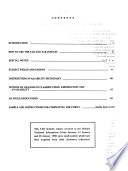
Technical Abstract Bulletin
www.google.co.nz
- Joined
- 27 December 2005
- Messages
- 16,453
- Reaction score
- 19,146
- Joined
- 27 December 2005
- Messages
- 16,453
- Reaction score
- 19,146
So we can put together a rough timeline for AN/ASX-2 TRISAT.
It was presumably a late 1960s Vietnam-era development by Scope Electronics to help with BVR target id, with 6 physical units made and fitted to US Navy F-4s.
Technically it was a separate digital processing unit using an analog signal fed from the host aircraft's radar, looking for distinctive modulation of the signal caused by reflections from jet engine blades to identify target type. It seems that it only worked on tracked targets.
It was at least considered to interface the physical unit to the AWG-9, but it seems like later the intent was to incorporate the algorithm, or improvements of it, into the programmable digital signal processors introduced with the AN/APG-65 and used to upgrade the AN/APG-63 and AWG-9.
DMR was an equivalent (slightly later) USAF program, also from Scope.
TRISAT turned into a more capable program called TID (Target ID) which allowed multitarget capability.

It was presumably a late 1960s Vietnam-era development by Scope Electronics to help with BVR target id, with 6 physical units made and fitted to US Navy F-4s.
Technically it was a separate digital processing unit using an analog signal fed from the host aircraft's radar, looking for distinctive modulation of the signal caused by reflections from jet engine blades to identify target type. It seems that it only worked on tracked targets.
It was at least considered to interface the physical unit to the AWG-9, but it seems like later the intent was to incorporate the algorithm, or improvements of it, into the programmable digital signal processors introduced with the AN/APG-65 and used to upgrade the AN/APG-63 and AWG-9.
DMR was an equivalent (slightly later) USAF program, also from Scope.
TRISAT turned into a more capable program called TID (Target ID) which allowed multitarget capability.
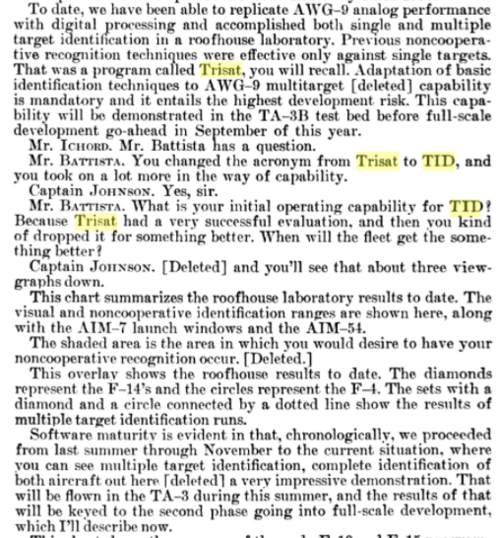
Last edited:
Similar threads
-
F-15 NCTR, RWR, EID in combat
- Started by overscan (PaulMM)
- Replies: 2
-
-
THE HUMAN-ELECTRONIC CREW: CAN WE TRUST THE TEAM?
- Started by Grey Havoc
- Replies: 0
-
TSR-2 Automated Flight Control Systems
- Started by KJ_Lesnick
- Replies: 10
-
Was Chain Home captured in Normandy?
- Started by Maury Markowitz
- Replies: 7

